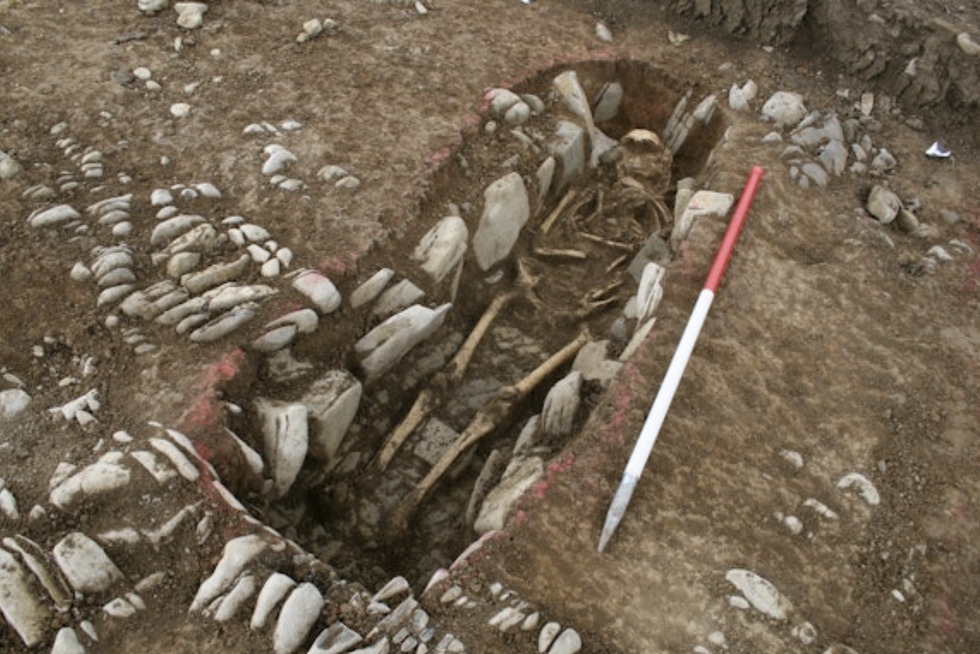The cemetery has so far unearthed five separate mysteries
Don't Miss
Most Read
Trending on GB News
Archaeologists have been left baffled by the discovery of an Egyptian artefact buried in a medieval Welsh cemetery dating back to 600 AD.
The rare find was unearthed at a site near Cardiff Airport that continues to confound researchers as they excavate dozens of skeletons in unusual positions.
Among the most perplexing discoveries are shards of fine, etched glass that experts believe originated from Egypt.
The glass fragments, which indicate significant wealth and status, were likely brought to the cemetery by people feasting while visiting their dead.

One of the dig sites in the grounds of the castle
Cardiff University
The cemetery, located in a field within the grounds of Fonmon Castle, has now been half excavated by researchers from Cardiff University. So far, they have discovered 39 adult skeletons lying in graves carved from thick limestone bedrock.
Analysis suggests that all but one of the skeletons are female. "I'm not entirely sure what it means just yet," said Dr Andy Seaman, who is leading the project.
The women's bones show signs of wear and tear, indicating they performed heavy manual work, yet there are also surprising signs of wealth and luxury.
Dr Seaman said: "Glass is rare, and where it is found, these are sites of quite significant status.
"It was probably made in the Levant - the Egypt area - and then was manufactured into vessels, we think, in southern France, and probably arrived here alongside wine in barrels."
LATEST DEVELOPMENTS:

Researchers working at the scene in the grounds of Fonmon Castle
Cardiff University
The presence of these exotic items suggests this was no ordinary community. Each person at the site has been buried with painstaking care, some laid flat, others crouching, all facing from east to west.
The discovery raises questions about trade networks and cultural connections between Wales and Egypt during this period.
Another unexpected find was a woman tossed in a ditch, in stark contrast to all the other carefully buried individuals.
The team believes she could have been an outcast or criminal, and has taken her bones to Cardiff University for further analysis.
Osteologist Dr Katie Faillace estimates the woman was in her late 30s or early 40s. Her skeleton shows a healed fracture to her arm and an infected tooth with an abscess that must have been painful.
The skeletons of two children were also discovered - a surprisingly small number given the high infant mortality of the time.
Further analysis of ten skeletons has revealed the cemetery's occupants came from across Wales and possibly southwest England.
"Every time we think we understand something, something else crops up and the picture gets more intriguing," Dr Seaman explained.
The dig continues this summer as archaeologists prepare to unearth the remaining half of the cemetery. Dr Seaman hopes to answer the many questions the site has raised.
"We're hoping to tell the story of the individuals within the cemetery, but also the broader community," he said.









